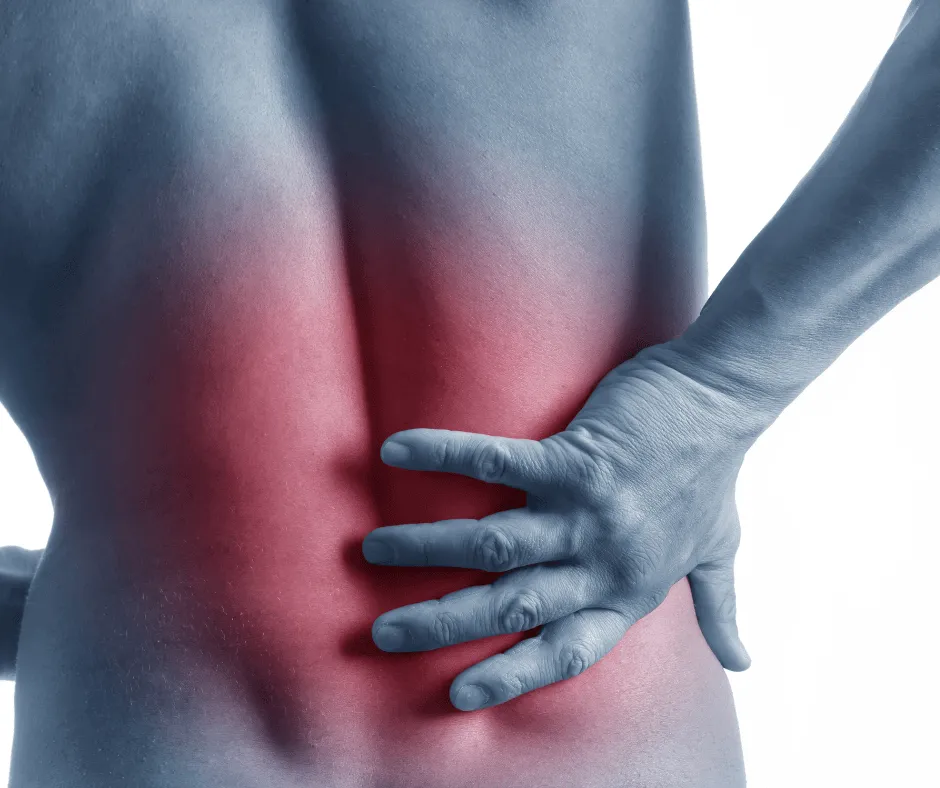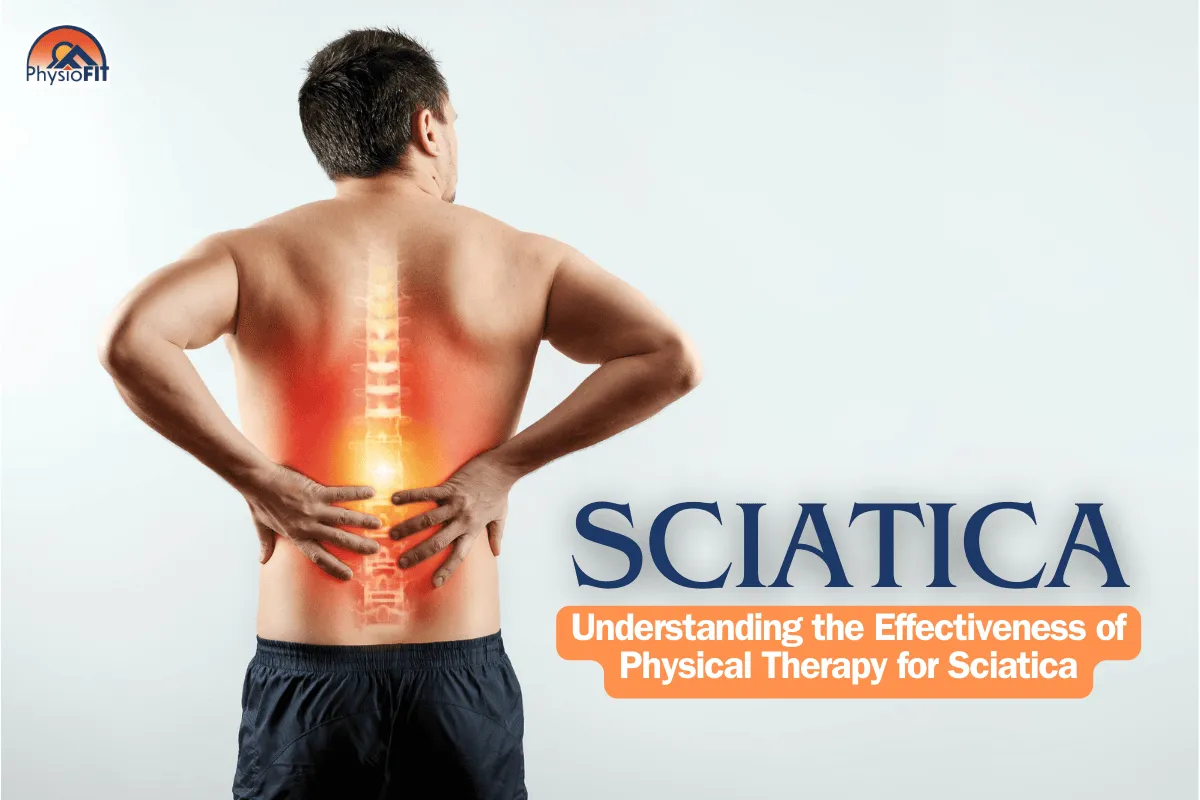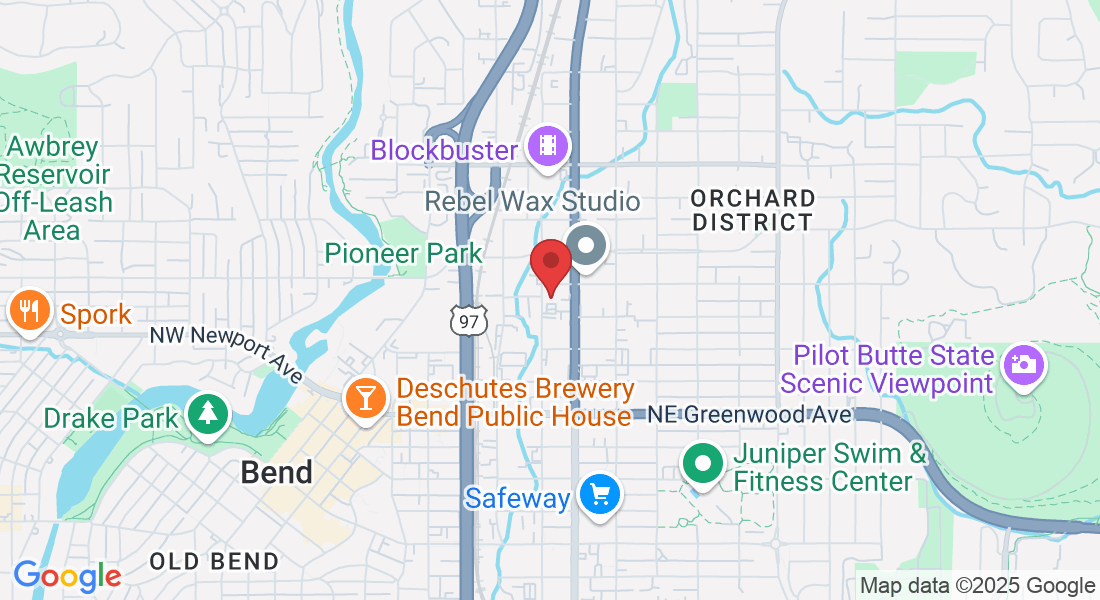Back Pain Relief
Reclaim Your Life, Free from Back Pain
Welcome to your journey towards freedom from back pain. One of the prevalent health issues in the United States is back pain, manifesting itself in various forms ranging from a persistent, mild ache to an abrupt, acute pain that might radiate down your leg. Back pain can be triggered by sudden incidents like accidents, falls, or lifting heavy objects, but it can also gradually develop due to age-induced changes in the spine. Sometimes, medical conditions such as inflammatory arthritis disorders are the culprits behind this pain.
Understanding the intricacy of back pain and its myriad causes, we at PhysioFit advocate for a multi-pronged approach to treatment. With each patient's unique path to relief in mind, we use evidence-based, fitness-centered physical therapy to offer personalized care. Our commitment is not only to alleviate your back discomfort but also to help you adopt measures that enhance your overall well being, thereby reducing the risk of chronic or prolonged pain, and enabling a swift return to your daily activities.
What You Should Know
Acute Back Pain: This is a sudden onset of discomfort that usually lasts from a few days up to a few weeks. Acute back pain is often the result of an accident or sudden physical strain.
Subacute Back Pain: This form of back pain can either come on abruptly or develop gradually over time, typically lasting from 4 to 12 weeks. It may be caused by an injury or overuse of the back muscles.
Chronic Back Pain: Characterized by discomfort lasting more than 12 weeks and occurring daily, chronic back pain may manifest quickly or slowly. It's often associated with degenerative conditions, such as arthritis or disc disease.
A proper diagnosis of a back problem involves a thorough evaluation from a professional.

The Most Common Causes of Back Pain
Back pain can emanate from a diverse array of factors, often intertwining and collectively leading to chronic lower back pain. These factors span mechanical or structural issues with the spine, inflammatory conditions, and other medical disorders. In some instances, it may even be challenging to pinpoint a definite cause for the onset of back discomfort.
Back pain may arise due to mechanical or structural irregularities within the spine, discs, muscles, ligaments, or tendons in the back, or due to nerve compression.
Sprains: These injuries affect the ligaments that provide support to the spine, connecting various bones together. Sprains often occur due to improper twisting or lifting.
Strains: These refer to injuries to a muscle or tendon, which can lead to significant back pain.
Degenerative disc disease: Aging leads to a gradual breakdown of the discs situated between the vertebrae of the spine. This condition is often associated with other degenerative spinal changes, such as arthritis or spinal stenosis.
Herniated or ruptured discs: These conditions occur when a disc compresses and irritates adjacent nerves, usually at the lumbar level but it can also affect the cervical spine.
Spondylolisthesis: This condition is characterized by a vertebra in the spine slipping out of its place or slowly misaligning.
Fractured vertebrae: Fractures of the spinal bones can be a significant source of back pain.
Scoliosis or other congenital changes to the spine: Birth defects and developmental abnormalities like scoliosis can lead to chronic back discomfort.
Myofascial pain: This condition refers to the tightness and pain in the muscles supporting the spine, which could result from muscle damage or from nerve input to the muscles originating from the spine.
As for inflammatory conditions, they also play a significant role in back pain:
Ankylosing spondylitis: This is a specific type of arthritis that affects the spine, causing stiffness and discomfort.
Other Medical Conditions that can cause back pain:
Osteoporosis, Fibromyalgia, Kidney Issues, Endometriosis, Spinal Infections, Tumors, Pregnancy.
Remember, if you resonate with any of the symptoms or conditions mentioned, we highly recommend making an appointment with us for a thorough evaluation and personalized treatment plan.
Proactive Steps for Back Pain Prevention
It's possible to avoid back pain resulting from excessive use or incorrect body movements. Here are some guidelines to foster a healthy back and promote a wholesome lifestyle:
Regular Exercise for a Strong Back: Engage in consistent exercises that fortify your back muscles. Balance-enhancing and strength-boosting activities, like yoga or tai chi, reduce the risk of falls, subsequent back injuries, and bone fractures. Always remember to warm up before any physical activity.
Nutrient-Rich Diet for a Robust Spine: Adopt a healthy diet packed with ample amounts of calcium and vitamin D, the essential nutrients for maintaining spinal strength.
Maintain a Healthy Weight for Stress Reduction: Keep your weight in check. Excess weight can exert unnecessary and harmful stress on your back.
Good Posture for Back Support: Embrace good posture, refraining from slouching. Ensure your back is well-supported while sitting and standing.
Safe Lifting Techniques for Injury Prevention: Evade lifting heavy objects as much as possible. If you have to, rely on your legs and abdominal muscles, not your back.

Common Symptoms of Back Pain
Escalated discomfort when executing lifting or bending movements.
Intensifying pain during rest periods, sitting stances, or when standing.
Rigidity in the morning upon waking, coupled with diminishing back pain upon engaging in activities.
Pain that travels from the back to other areas such as the buttocks, leg, or hip.
Discomfort in your neck, arm, or back
Recurring episodes of back discomfort.
Remember, if you resonate with any of the symptoms or conditions mentioned, we highly recommend making an appointment with us for a thorough evaluation and personalized treatment plan.
Please Note: The information provided on our website is intended for general education and is not a substitute for professional medical advice. Each individual's situation and body is different. Therefore, what may work for one person may not work for another. We care about your well-being and advise you to reach out to us to discuss your specific needs before implementing any advice from our website.
Your Source for All Things Physical Therapy in Bend Oregon
The PhysioBlog

Can Physical Therapy Help Sciatica: Understanding the Effectiveness of Physical Therapy for Sciatica
Please Note: The information provided on our website is intended for general education and is not a substitute for professional medical advice. Each individual's situation and body are different. Therefore, what may work for one person may not work for another. We care about your well-being and advise you to reach out to us to discuss your specific needs before implementing any advice from our website. If you’d like to explore this more or would like to schedule a time with a physical therapist in Bend Oregon, contact us at PhysioFITBend.com
Introduction
Imagine a pain that starts in your lower back and shoots down to your legs, making everyday activities a challenge. This is most often times, sciatica, a common yet often misunderstood condition. But there's hope. Physical therapy has emerged as a beacon of relief for those suffering from this debilitating ailment. In this comprehensive article, we'll explore the symptoms and impact of sciatica, delve into the efficacy of physical therapy, examine the types of therapy available, and discuss their success rates.
What is Sciatica and How Does it Affect You?
Sciatica is not your typical backache. It's a condition characterized by pain that originates in the lower back or buttock and travels down one or both legs. This pain is caused by irritation or compression of the sciatic nerve, the longest nerve in the body. Sciatica's pain is often described as sharp, burning, or even akin to an electric shock. It can vary in intensity and may be aggravated by sitting, standing for long periods, or certain movements.
Besides pain, sciatica can cause numbness, tingling, or muscle weakness in the affected leg or foot. Sometimes, these sensations can be as debilitating as the pain itself, making it difficult to walk or even stand.
The root causes of sciatica are diverse. A herniated or slipped disc, where the soft cushion of tissue between the bones in your spine pushes out, is a common cause. Spinal stenosis, the narrowing of spaces within your spine, can also put pressure on the nerves. Piriformis syndrome, where the piriformis muscle irritates the sciatic nerve, is another cause. Other factors like pregnancy, obesity, and prolonged sitting can increase the risk or exacerbate the symptoms of sciatica.
Neglecting sciatica can lead to worsening symptoms, chronic pain, and even permanent nerve damage. It's essential to seek timely treatment to prevent the progression of the condition and to maintain a good quality of life.
Physical Therapy for Sciatica: An Overview
Physical therapy stands as a beacon of hope for those suffering from sciatica. This non-invasive, medication-free approach is centered around relieving the symptoms of sciatica and addressing its root causes. Physical therapists use a variety of techniques tailored to each individual's condition.
Exercises aimed at strengthening the back and abdominal muscles play a crucial role in stabilizing the spine and alleviating pressure on the sciatic nerve. Flexibility exercises and stretches help improve the range of motion and reduce stiffness, further easing sciatic pain.
Nerve glides or neural mobilization exercises are particularly effective for sciatica. These exercises gently stretch and glide the sciatic nerve, helping to reduce nerve entrapment and improve nerve function.
Manual therapy, including massage and joint mobilization, can be instrumental in reducing nerve impingement by realigning the spine and relieving pressure on the sciatic nerve.
Efficacy of Physical Therapy: Is it Worth it for Sciatica?
When compared with other treatments like medication, injections, or surgery, physical therapy offers a unique advantage. It not only provides immediate pain relief but also works on the underlying causes of sciatica. Our approach here at PhysioFIT helps in reducing the recurrence of the condition and promotes long-term health of the spine and nervous system.
How Long Does Physical Therapy Take to Help Sciatica?
The journey to relief from sciatica through physical therapy can vary from person to person. Factors such as the severity of the condition, the specific cause of sciatica, and individual healing rates influence the recovery time. Generally, patients begin to experience relief within a few weeks of consistent physical therapy. However, achieving full recovery may take a longer period, depending on the individual's response to therapy and adherence to the prescribed exercise regimen. It’s important to find the proper physical therapist that can help with this. So be sure to contact us at our Bend location to make an appointment today!
What Therapy is Best for Sciatica?
Selecting the appropriate physical therapy technique is crucial and depends largely on the individual's specific condition and symptoms. For some, strengthening exercises may provide the most benefit, while others might find more relief through nerve glides or manual therapies. This decision is typically made following a comprehensive assessment by a skilled physical therapist.
The Success Rate of Physical Therapy for Sciatica
The success of physical therapy in treating sciatica is well-documented. Numerous studies and patient reports indicate substantial improvement in pain and functionality. Many patients are able to return to their daily activities without the debilitating pain that sciatica can cause.
Incorporating Physical Therapy into Your Sciatica Treatment Plan
Incorporating physical therapy into a treatment plan for sciatica begins with an assessment by a physical therapist. This assessment helps in creating a personalized treatment plan, which may include exercises, manual therapy, and education on posture and ergonomics. Regular sessions and at-home exercises are key components of this plan, and adjustments are made as needed to ensure continued progress and relief.
Conclusion
Physical therapy in Bend Oregon emerges as a highly effective, safe, and non-invasive treatment option for sciatica. By addressing both the symptoms and the root causes of the condition, physical therapy not only alleviates pain but also contributes to long-term spinal health. For those suffering from sciatica, physical therapy presents a viable path to recovery and a return to a pain-free life. So be sure to reach out today to make an appointment with us here at PhysioFIT.
FAQ Section
How often should I attend physical therapy sessions for sciatica?
The frequency depends on the severity of the condition. Typically, 2-3 times per week is recommended.
Can I do physical therapy exercises at home for sciatica?
Yes, home exercises are an important part of the treatment plan, but get guidance from your physical therapist first.
What lifestyle changes can support physical therapy for sciatica?
Maintaining a healthy weight, regular exercise, and proper ergonomics at work can help.
Are there any side effects of physical therapy for sciatica?
Physical therapy is generally safe with minimal side effects, but some discomfort may be experienced initially.
How do I know if physical therapy is working for my sciatica?
Reduction in pain and improvement in mobility are good indicators of progress.
Please Note: It's important to note that any exercises or techniques that are shared should be performed under the guidance of a qualified physical therapy expert to ensure correct technique and to prevent injuries. A physical therapist can provide a customized exercise program based on the individual's fitness level, goals, and any existing injuries or conditions. If you’d like to explore this more or would like to schedule a time with a physical therapist in Bend Oregon, contact us at PhysioFITBend.com
Copyright PhysioFIT 2025 . All rights reserved


